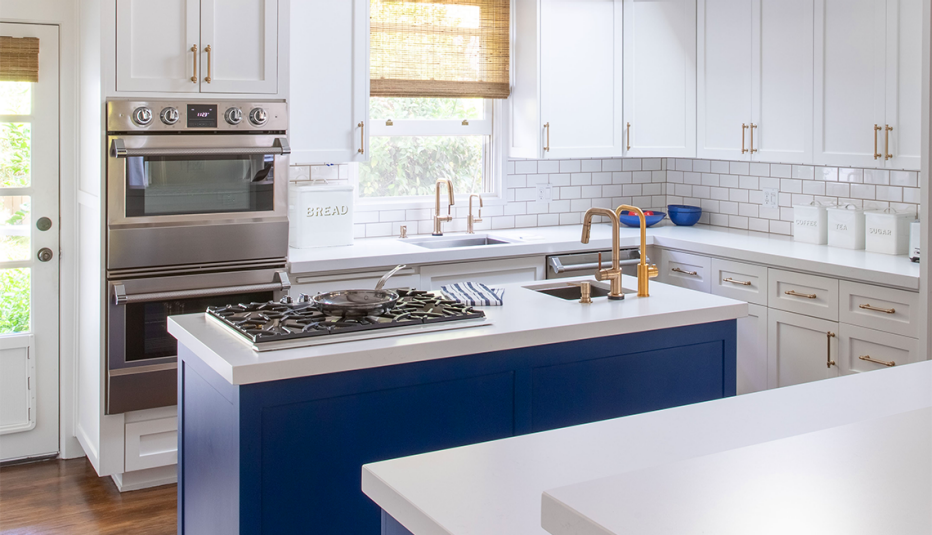AARP Hearing Center


Kitchens may be the most popular room in the house: It’s where everyone tends to gather.
Yet, how often do you think about the design and function of your kitchen? Some simple kitchen modifications may make cooking, eating, cleaning and other tasks easier as you age.
“Kitchens are typically overlooked,” says Travis Camerio, a general contractor, certified aging-in-place specialist and owner of Camerio Builders Inc. in the Atlanta area. “There are ways to simplify everyday tasks that can make a huge difference in the way you live.”
Perhaps you have difficulty reaching high shelves or bending over to lift a heavy appliance, especially if you suffer from arthritis or a bad back. Or maybe not everyone in your multigenerational home can sit at the breakfast bar: The stools may be too high for older adults or unsafe for small children, or the space might not accommodate a wheelchair.
The earlier you start thinking about and making changes to prepare for aging, the better, says Kerrie Kelly, CEO and creative director of Kerrie Kelly Design Studio in Sacramento, California.
“Good design features make sense whether you’re 102 or 2 years old,” says Kelly, who is a Zillow interior design national spokesperson and a board member for the National Kitchen & Bath Association. “One of the worst things is to need something at a certain time and have to go through a renovation. As much as you plan, there are always hiccups and things that could go wrong.”
Here are nine ideas that go beyond cosmetic changes:
1. Use smart technology
Many home appliances and accessories have Wi-Fi capability and can be controlled by voice or a mobile app. Such “smart” technology includes touchless faucets, motorized window shades and sensor lights. Faucets you wave a hand in front of or activate by voice are helpful if your hands are slick with olive oil or sticky with dough or if you have arthritis or stiff fingers. These smart faucets will cost more — from about $400 to over $1,000.
2. Stay hydrated
The importance of staying hydrated and providing easy access to water and other beverages is making its way into kitchen design. Dehydration can be a real risk for older adults. As people age, their sense of thirst is blunted so they may not be aware their body needs fluids, and those with cognitive impairment may forget to drink altogether. A “hydration station” can be a reminder to focus on the liquid your body needs.
At the recent Kitchen and Bath Industry Show in Las Vegas, one of the most popular attractions was a high-end hydration station, Kelly says. Its special tap provides filtered cold water, sparkling water or boiling water with the push of a button, but it will set you back at least $5,000.
“Hydration stations are designed for quality of life no matter what stage you’re at,” says Kelly, who installed one in her kitchen. “People report drinking 80 percent more water than before. It’s more sustainable than buying bottled water.”


3. Reach inaccessible cabinets
As people age, reaching high shelves or deep into dark cabinets can cause a fall or a strain. New options make it easier to get to what you need in your kitchen.
“Any interior cabinet component that brings what’s inside to you is a good idea,” Kelly says. That includes cabinet inserts, risers and slide-out shelves. You can install these yourself and they’re affordable: Prices start at $11 for basic inserts to around $100.





































































More From AARP
10 Ways You’re Using Your Microwave All Wrong
Maximize efficiency and safety8 Small Home Upgrades With Big Impact for Aging
Consider minor changes to make your house a safer place to grow older
Home Improvement Quiz
Test your knowledge of remodeling, renovations